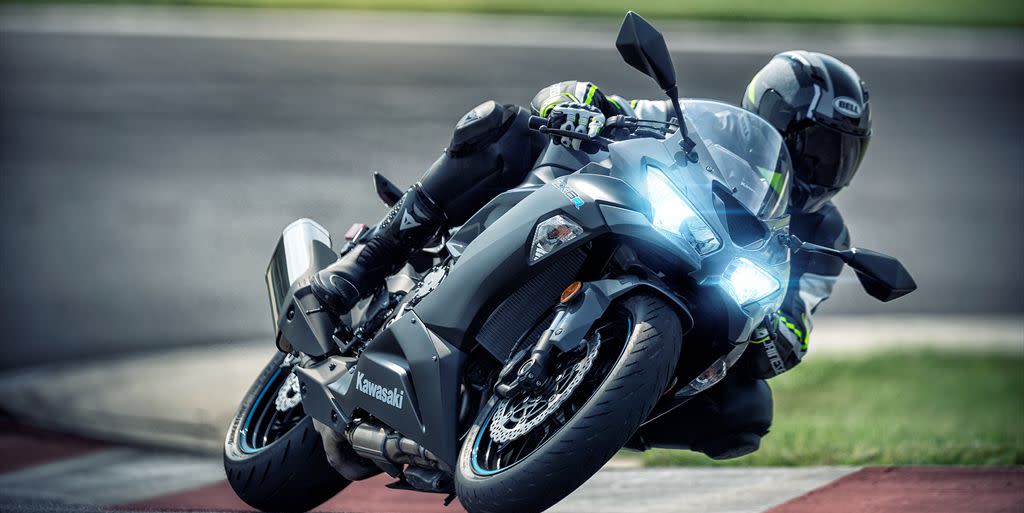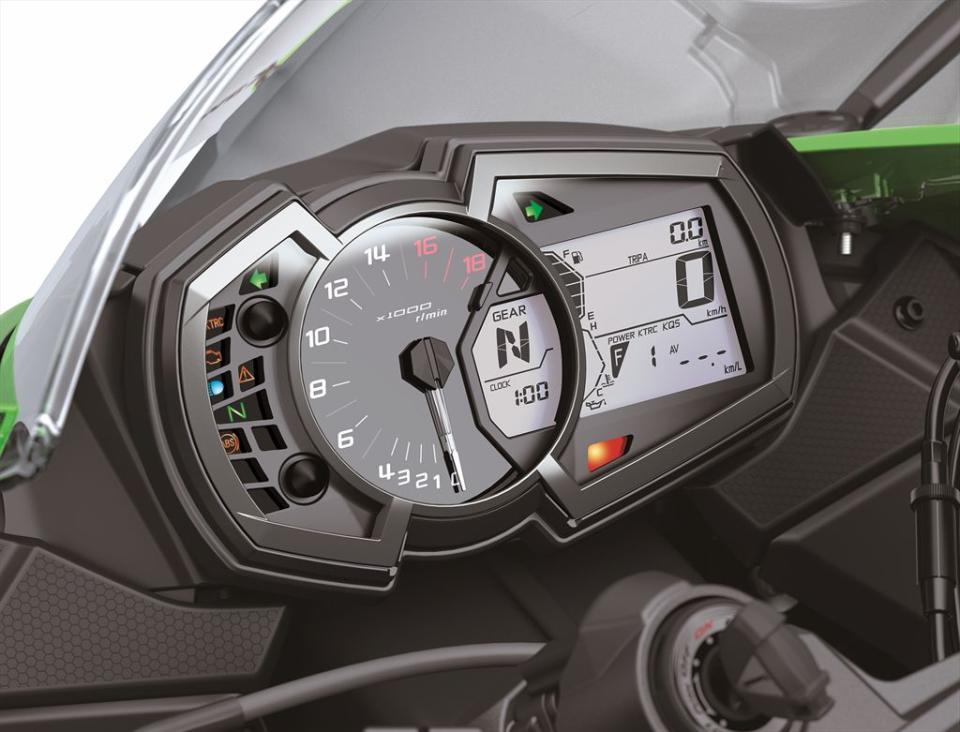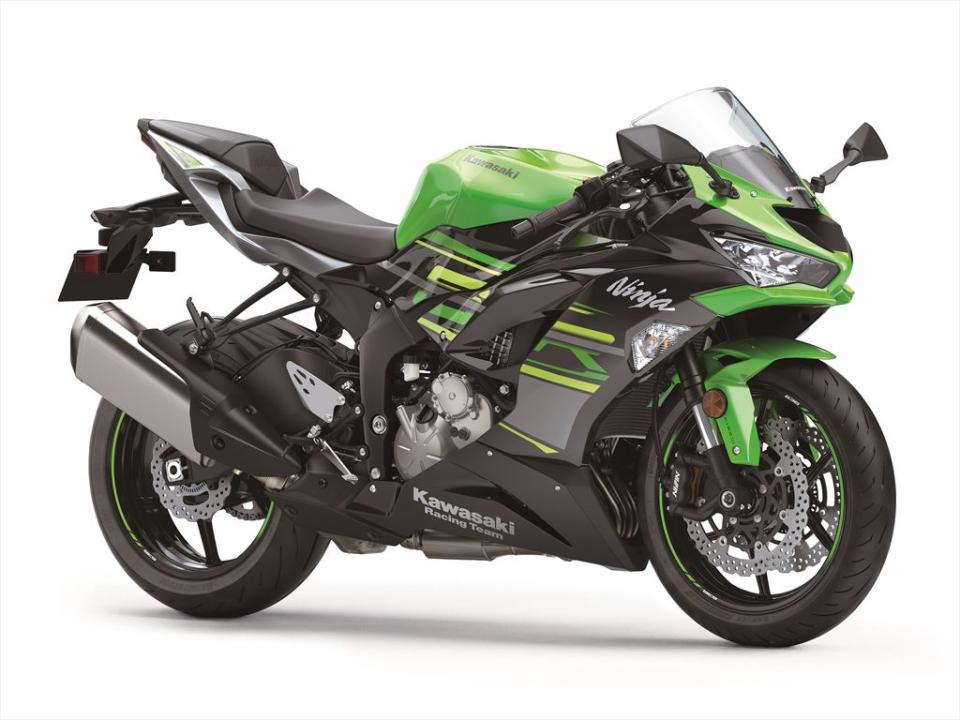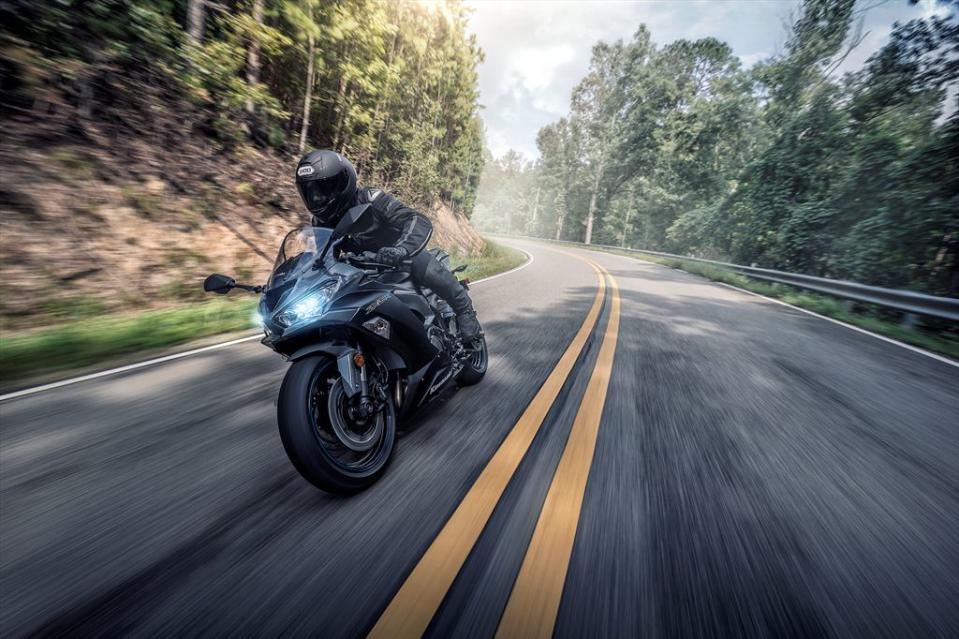One of the Greatest Kinds of Motorcycle Is Suddenly Endangered

As recently as a decade ago, 600cc sportbikes (called supersports) were the hottest motorcycles in the world. Novices could graduate to them from entry-level 250cc- and 300cc-engine beginner bikes. They were less expensive and lighter than liter (1,000cc) bikes, which hardly anyone has the riding skill to drive fast. A supersport could chew up corners and conquer the track, but was docile enough to ride home on the street. It was the everyman's two-wheeled supercar.
And then came the Great Recession. Croft Long, Kawasaki USA's manager of market analytics, says the 2008 recession knocked out half of the market for both supersports and liter bikes. (Kawasaki doesn’t publish sales numbers, but Long says even now, in 2018, the brand is still only selling half of what it was in these classes were 10 years ago).
Another hurdle happened in 2017, when all motorcycles had to meet a stricter Euro 4 emissions standard. That meant more engineering dollars spent bringing models up to compliance - and fewer manufacturers that think doing this with their supersports is worth it. Suddenly, this class of great motorcycles is in danger.

Consider the motorcyclist's progression we mentioned, from a 250cc sportbike such as a Ninja 250R or Honda CBR250R up to a 600c supersport. Whenever your ego (and wallet) decided you needed it, you'd be ready to skip past the 750cc segment and head straight for a 1000cc superbike.
Well, things have changed. During the 2010s, those entry-level 250s became 300s and 400s. They got more powerful, but stayed cheap. At the same time, liter bikes have gotten friendlier. New models began offering anti-lock brakes, traction control, and selectable power-limiting modes. The middle was being squeezed out from the top and bottom. It was another reason manufacturers weren't ready to put money into updating their supersports.
That's why I assumed Kawasaki would follow other manufacturers and let its 600cc ZX-6R wither on the vine. Instead, Kawasaki updated the bike for 2019 and made it a bargain: $9,999. The new bike carries over the basic architecture of the 2013-2018 ZX-6R, including the expensive bits such as the frame and engine, to reduce development costs, which let Kawasaki chop $1,700 off the price to entice buyers back into the 600cc segment. (No manufacturer has gone clean-sheet for a total redesign on a 600cc sportbike since Kawasaki and MV Agusta in 2013, and more than 10 years for most of the other manufacturers.)

But for Kawasaki, carrying over the old architecture to keep that $9,999 number was vital for enticing buyers who, Long says, would otherwise would be looking at used bikes.“From what our research told us, $10,000 is the magic price point,” he says. “I think there's a psychology threshold of where anything over $10,000 is a big expense.” All ZX-6Rs, including the $9,999 base model, come with an all-new instrument cluster and upshift-only quickshifter. You can go past $10,000 by optioning it with ABS and a Kawasaki green paint scheme.
I asked, but Triumph didn't respond to my questions about rumors of the Daytona's return as a 765cc middleweight. Triumph recently agreed to provide 765cc motors to the 2019 FIA Moto2 racing series, and so a new Daytona would be a ready-made solution to fill the chasm in Triumph's lineup with an existing engine.
Honda's CBR600RR and Suzuki's GSX-R600 have loped along unchanged for years, and neither manufacturer has announced any plans to upgrade them. Because of Euro 4, Honda pulled the CBR600RR from the European market in 2017 rather than spend the cash to make it compliant. Even Ducati's SuperSport-its official name, not its class-competes as a sort of threshold-straddling weirdo, with a modest 937cc motor pushing 110 horses through a pudgy 463 pounds, wet. The only bikes keeping the 600cc segment interesting are the MV Agusta F3 675, Yamaha R6, and now, the ZX-6R.

Even as manufacturers adapt to Euro 4, motorcycles will have to meet the stricter Euro 5 emission standard in 2020. Kawasaki says it’s close to being compliant, but this remains an obstacle for a stumbling segment. “We’re trying to get more out of less,” Long says. “More performance and more horsepower out of less fuel, more fuel-efficient with better economy. It's an engineering challenge that keeps us up at night.”
The supersport's place in history is written and assured. Its place in the future is not. If you want a new one, get to it while a few holdouts are still putting them in dealerships.
('You Might Also Like',)
